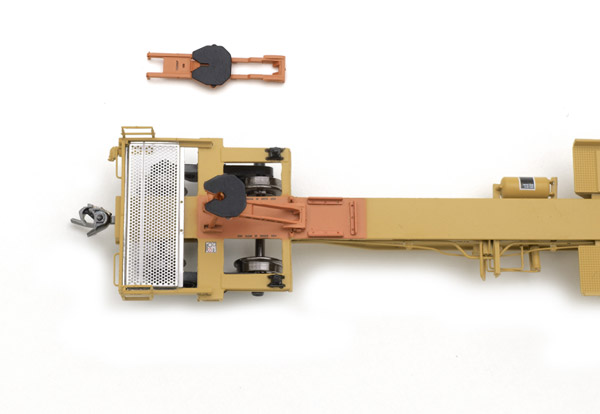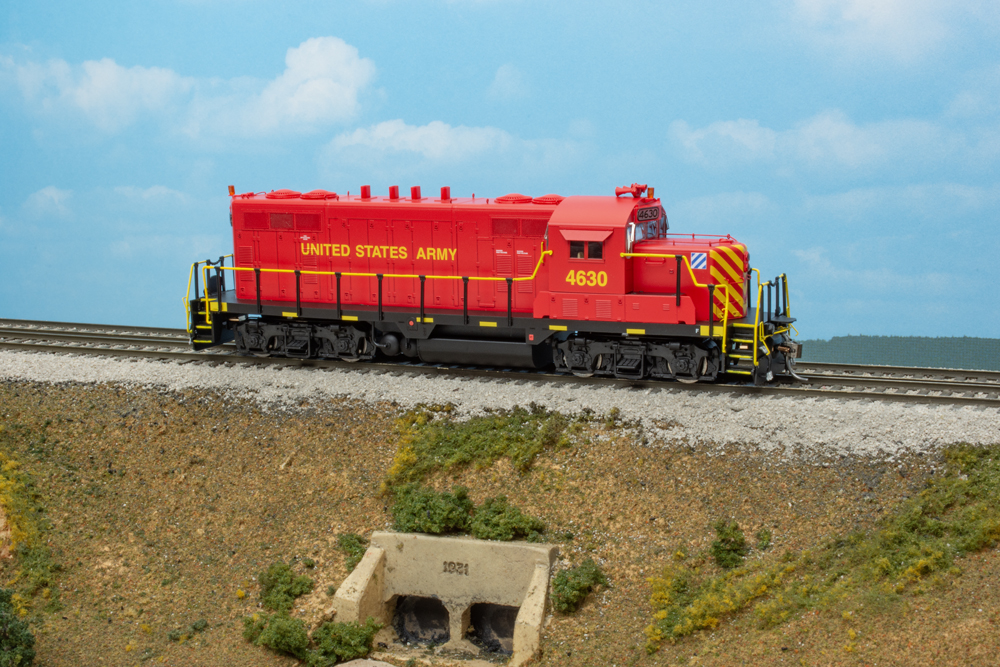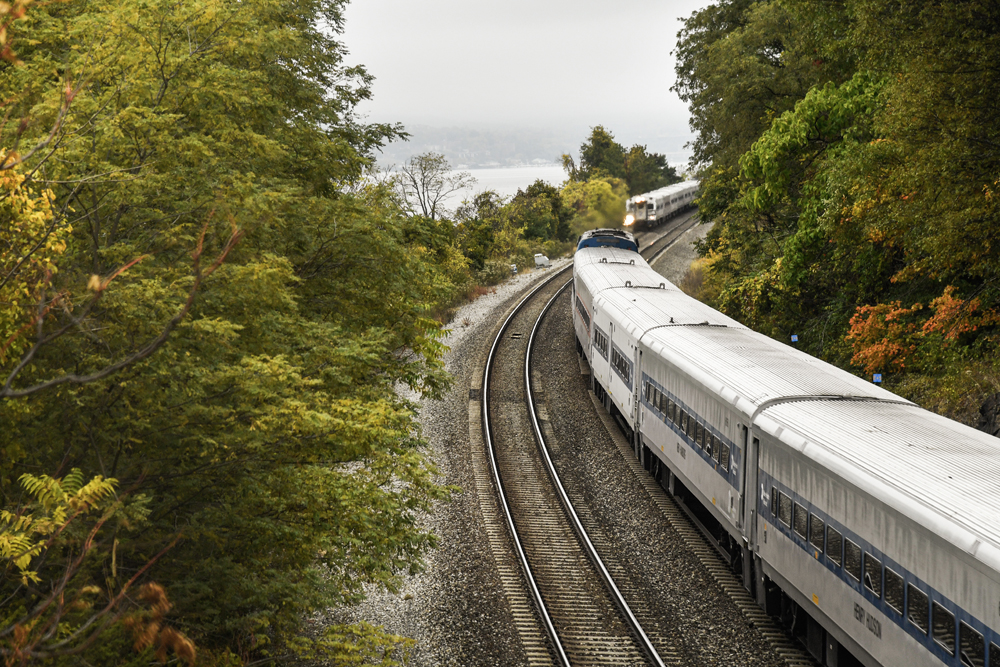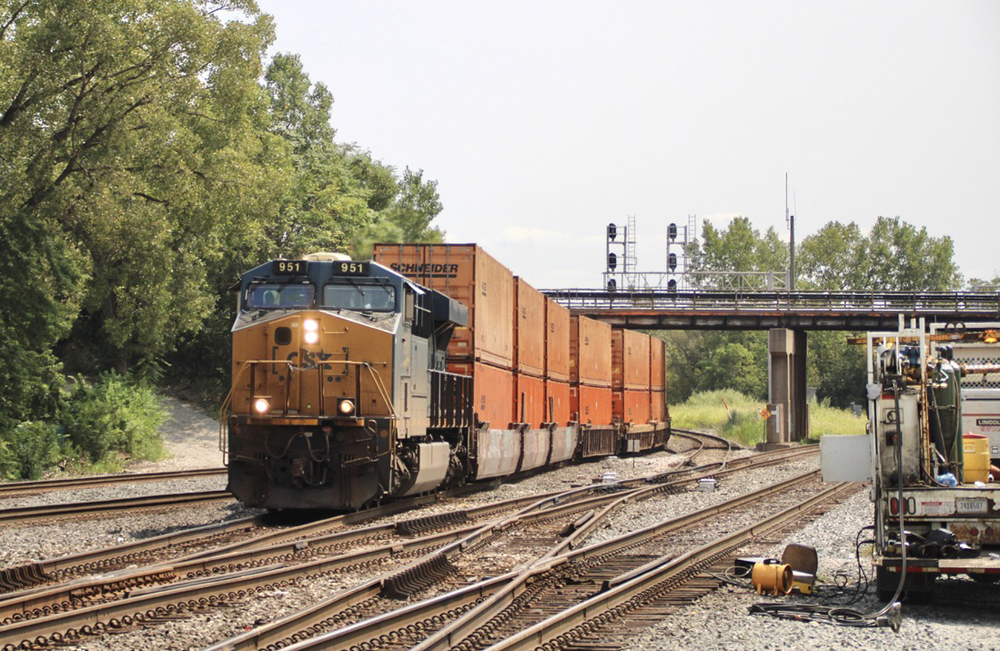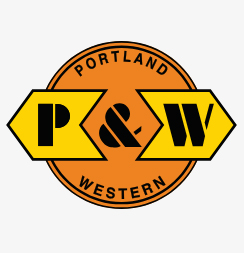In 1989, Trailer Train surveyed its client railroads about their shipping needs. The end result of that research was the design for the all-purpose spine car. Though it couldn’t carry as many containers as a well car of equivalent length, the spine car made up for it with the flexibility to handle either containers or trailers, while minimizing non-revenue car weight. Trailer Train gave the basic design to four car builders, including TrinityRail, which made the version modeled by Bowser.
Mix and match. The cars have units of three types: the B (brake) end, with an end platform, coupler, and two trucks; the A end, with end platform, coupler, and single truck; and the single-truck, intermediate C unit. Just as Trinity did, Bowser sells the cars in three- and five-unit sets. Trailer Train numbered the three-unit sets in the 350000 range; five-unit cars were numbered in the 550000s.
Each car has two pairs of pins set a scale 40 feet apart. On the prototype, these mate with sockets in the base of standard containers. However, unlike the prototype, most HO scale containers stack via dimples on the top and pegs on the bottom. I tested the cars with various brands of HO scale containers, but found that you’d need to remove the cars’ pins or drill holes in the containers to mount them securely on these cars.
I tested a three-car set. Despite their spindly look, the cars are surprisingly hefty. Die-cast metal center beams gave the empty three-car set a collective weight of 93⁄4 ounces. That should make the cars track well, even when unladen.
The cars are smoothly painted, with crisp, straight printing. Even the warning messages on the sides of the folding hitch areas were legible under extreme magnification. If you want your spine car to match the prototype photos I found, the entire thing should be sprayed with a heavy coat of rust.
I found prototype dimensions listed on the RR Pictures Archives website (www.rrpicturearchives.net). The major dimensions match the prototype. The insulated metal wheels were in gauge, and both Kadee magnetic knuckle couplers were mounted at the correct height.
Notches in the center beams give a bit of extra clearance for the wheels, letting them negotiate 21″ radius curves, but the wheels bind against the center beam on 18″ curves. Cars this long would look better on broader curves, anyway. Since the car articulates on the trucks, the overhang on curves is entirely toward the center of the curve.
Bowser’s Trinity spine cars are well-made models that would look great hauling a mix of intermodal freight on a modern HO layout.
Manufacturer
Bowser
1302 Jordan Ave.
Montoursville, PA 17754
bowser-trains.com
Road names: Trailer Train (TTAX reporting marks; seven numbers for three-car set, five numbers for five-car set)
Era: 1989 to present
Features
- Blackened metal wheelsets
- Cast-metal center beam
- Etched-metal end platforms
- Flexible plastic handrails and stirrup steps
- Interchangeable (raised and lowered) trailer hitches
- Kadee magnetic knuckle couplers
- Minimum radius: 21″
- Separately applied brake gear and piping
- Weight: 93⁄4 ounces (three units)






